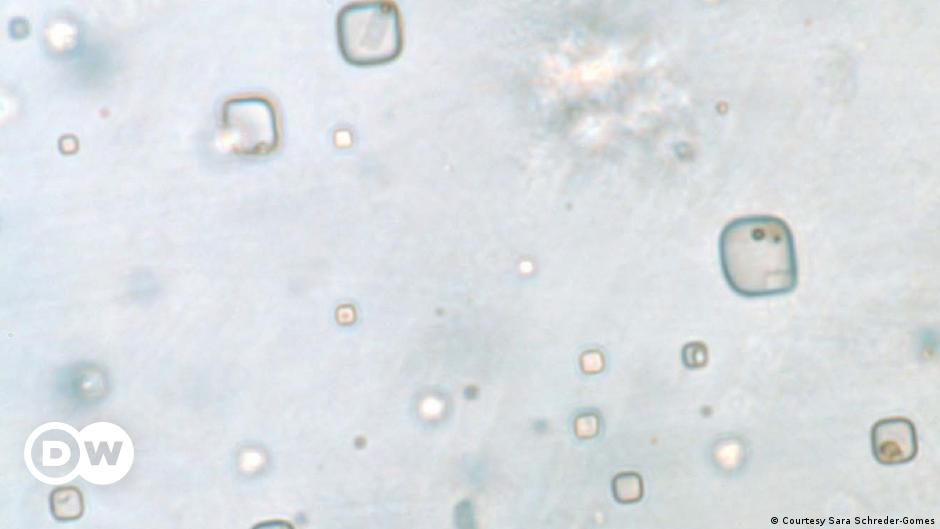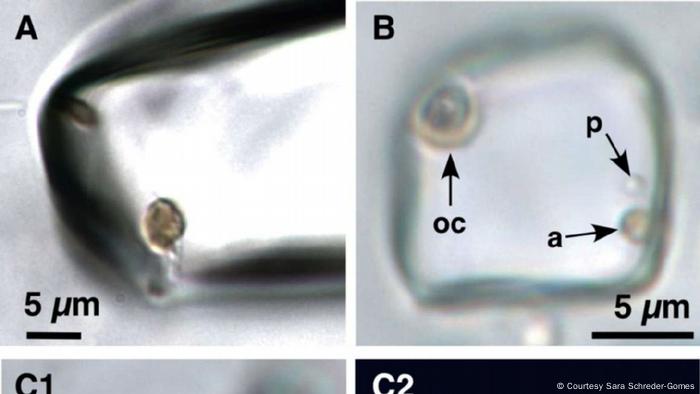They found organisms that are probably 830 million years old | Science and Ecology | Dr..

Geologists from West Virginia, USA, may have made an amazing discovery by finding a life-form for more than 800 million years, According to a new article published in the magazine geology.
Specifically, the team of researchers claims to have discovered tiny remnants of prokaryotic life and algae, trapped in halite crystals found within the Brown Formation, an 830-million-year-old rock found in the Australian desert, according to the new research.
However, the most surprising thing about this discovery is undoubtedly the possibility that some of these microorganisms are still alive.
If they are definitely found alive, the discovery could have major implications for the search for life on Mars.
Implications for the search for terrestrial and extraterrestrial life
According to the press release from the Geological Society of America, the discovery demonstrates that microorganisms from saline sedimentation environments can remain well-preserved in halite for hundreds of millions of years and can be detected on site Only by visual means. In addition, the study will have implications for the search for life in both terrestrial and extraterrestrial chemical sedimentary rocks.
Taking a portion of Brown’s composition, which includes halite salt crystals, study co-author Sarah Schrader-Gomez and researcher Kathleen Bennison found organic fluids and solids — consistent with prokaryotic and eukaryotic cells, based on their size, shape and UV flash — using non-invasive optical techniques. scattered by optical microscope.
This left the halite intact. Which means, importantly, that everything inside of it must be confined to the time the crystals formed.
According to the researchers, microorganisms — encased in tiny pockets of fluid, smaller than the width of a human hair — lived nearly a billion years ago in a shallow lake, saltwater or marine environment.
Scientists previously claimed to have revived primitive microorganisms found in salt crystals, so it’s possible that the Australian organisms are still alive, too.
Implications for the search for life on Mars
The researchers note in their paper that although “the possibility of microorganisms surviving on geologic time scales is not fully understood,” Brown’s prokaryotes, if certainly found alive, could have huge ramifications for the search for life on Mars, Where large salt deposits have been identified as evidence of ancient liquid water deposits on a large scale similar to the Brown Formation.
According to Schreder-Gomes, the Perseverance rover on Mars is storing rocks on Mars that will eventually be returned to Earth, and non-destructive techniques will be needed to understand the context of those rock formations.
“We need to do this kind of analysis before any other destruction techniques, with samples being returned,” he said.
Although it wouldn’t be the first organism to be found within a halite crystal hundreds of millions of years old – that distinction belongs to a bacterium that researchers extracted in 2000 and dates back to the Permian period, about 250 million years ago -, the prokaryotes of the Brown Formation are The oldest living organisms on Earth that have been discovered so far.
“Visual examination should be considered an essential step in any study of biomarkers in ancient rocks,” the team wrote. “It provides insight into the geological context of the microorganisms before other chemical or biological analyzes are performed…and provides a target for such analyzes.”
They added that “palace chemical deposits, both terrestrial and extraterrestrial, should be considered as potential hosts for ancient microorganisms and organic compounds.”
Obviously, more research needs to be done before we find out if the microorganisms trapped in that ancient crystal are still alive, but if we find out, it will certainly matter.
Edited by Felipe Espinosa Wang.

“Award-winning zombie scholar. Music practitioner. Food expert. Troublemaker.”



/cloudfront-eu-central-1.images.arcpublishing.com/prisa/AHVYMMDSTZDTDBFNZ3LMFUOKNE.jpg)








